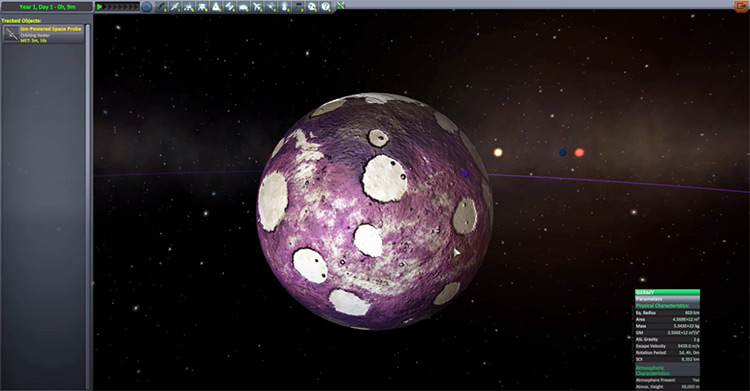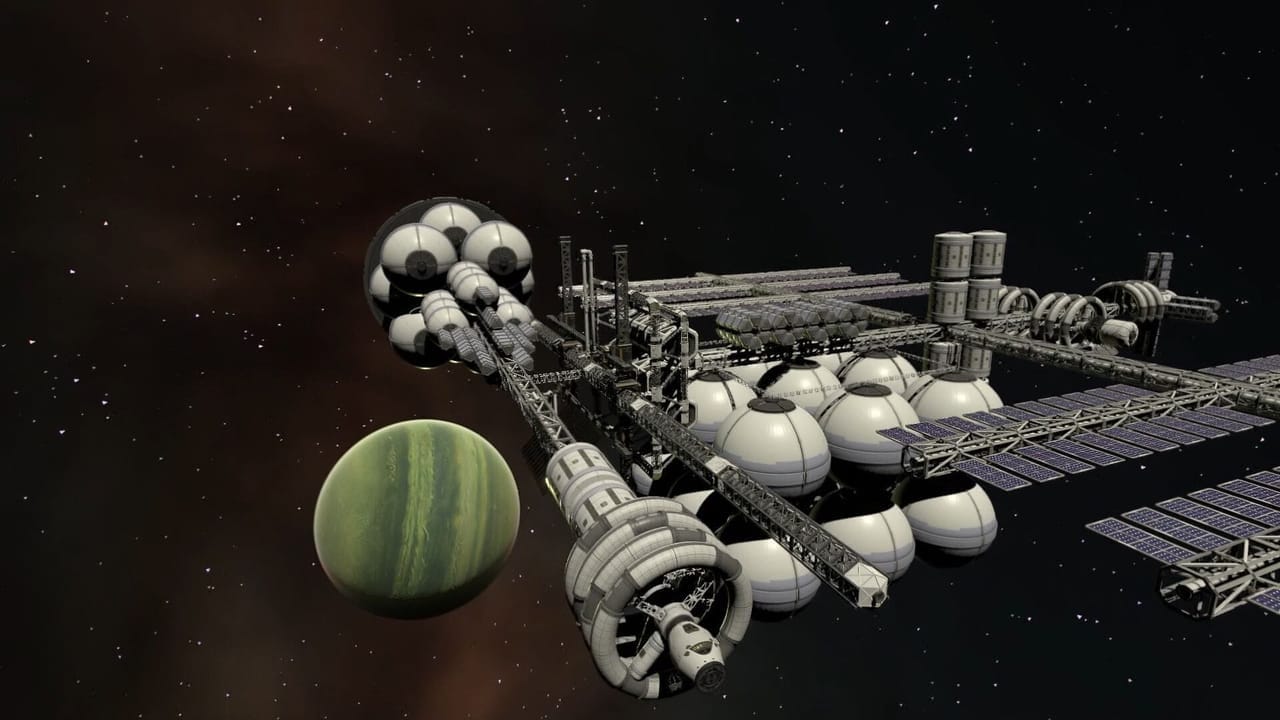

As regards reactions to the sequel in the existing Kerbal playerbase, he says that "their and our instincts are well- aligned" so far, for all the usual fan misgivings about designing for accessibility. Simpson can't share much on the subject, but suggests that this feature as much as the clearer interface will help the game expand its audience (another benefit of the overhaul is that modders have more options to play with). If tours of other solar systems and offworld dockyards are Kerbal Space Program 2's more immediate draws, its magic ingredient may prove multiplayer, which is the reason Star Theory has overhauled so much of the original game's engine.

Orbital space stations are naturally less constrained – though still liable to crumble like wet candyfloss when you dock with one a little too firmly – which "means you can build vehicles of essentially arbitrary scale, as big as your computer can handle, probably." This greater capacity is vital because interstellar vehicles guzzle up fuel more or less constantly, accelerating for the first half of the voyage, then flipping around to decelerate for the second. There's a lot of domino-style stuff you can get into. Personally I love the idea of building just the longest possible cantilevered structure out over the edge of a canyon, and then a landing pad on the end of that, and trying to diving-board that thing. "We are simulating physics for those too, and there are so many goofy things you can try. "Surface colonies really can turn into a game of Tower Of Goo," Simpson says. So this is a way for us to couple player progression to growth."Īs for the architecture of those colonies, you'll want to play it safe to begin with, sprinkling a few habitats across a nice level area, but overreaching is much more fun. And that's a great way of decoupling colony progression from time zoom, because a lot of time-based mechanics are completely undone by the zoom – I can just sit there and activate 10,000x zoom and things happen automatically. As you achieve things in the games, Kerbals celebrate by. "It's essentially what drives population increase locally at individual colonies. There's also the enticing prospect of Kerbal sex – or, as Simpson puts it, "growth events" – which aim to encourage players not to fast-forward their projects quite as often. Star Theory is still working on the supporting economic systems, but the key currency for tech is once again science. Many of the old technologies are back, too, albeit "in more beautified form" but there are plenty of new toys, from extra ship core sizes to fresh kinds of propulsion, including a drive that works by detonating nukes behind it – not something you should try near a starbase. "If we succeed in making the first-time user experience better there will be more people landing on the moon" Nate Simpson, creative director "We've basically turned that first-time user experience from a cliff, where you have to go watch YouTube videos to understand what's happening, into a ramp."

"What we've seen from our early user testing, is that this is actually a game that is quite accessible, without us having to dumb down the core game," Simpson says. (Advanced tricks include the ability to create separate versions of a ship simultaneously then combine them.) As regards flight, some hotkey functions have been moved into the UI, while other elements have been cleared away. While still labyrinthine, the construction screen now sports filters and colour-coding and a plan view to help players align boosters. Hence the new animated tutorials for features such as the navball, which shows ship orientation, and hence the revised UI. If you want more like it every month, delivered straight to your doorstop or your inbox, why not subscribe to Edge here (opens in new tab). This feature first appeared in Edge Magazine.


 0 kommentar(er)
0 kommentar(er)
